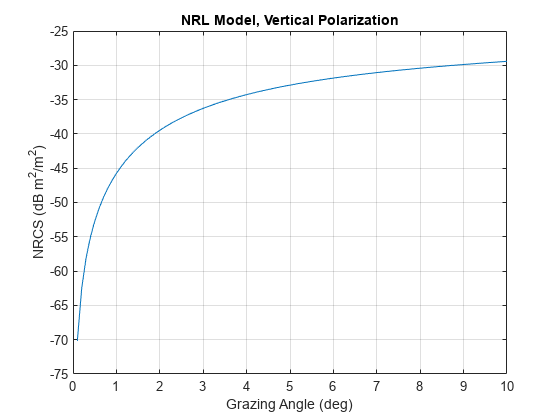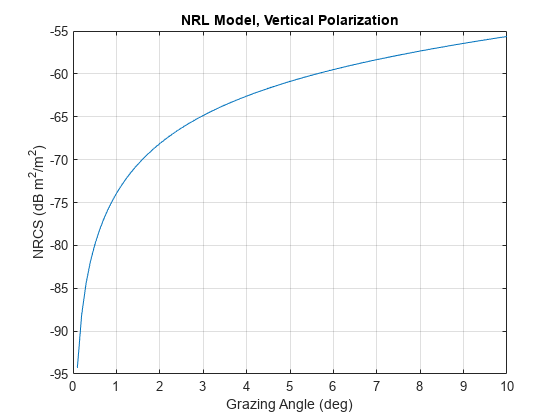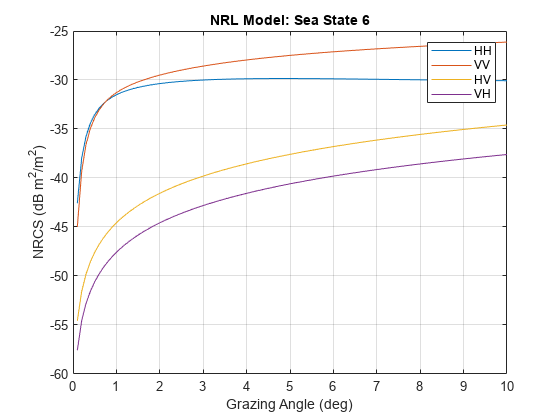surfaceReflectivitySea
Description
Normalized reflectivity is the radar cross-section of a unit area of a sea surface. Multiplying by the total area of a surface or the illuminated area of a surface gives the total radar cross-section. Normalized reflectivity is also referred to as surface σ0 and is a function of frequency and grazing angle.
To compute the normalized reflectivity:
Create the
surfaceReflectivitySeaobject and set its properties.Call the object with arguments, as if it were a function.
To learn more about how System objects work, see What Are System Objects?
Creation
Description
refl = surfaceReflectivitySearefl, for a sea surface. Use this
object to generate a normalized radar cross section (NRCS). This syntax assumes a
'NRL' sea model with a sea state of zero.
refl = surfaceReflectivitySea(Name=Value)Name set to the specified Value. You
can specify additional name-value pair arguments in any order as
(Name1=Value1,...,NameN=ValueN).
Example: refl =
surfaceReflectivitySea(Model="Hybrid",SeaState=2,Speckle="Rayleigh") creates a
normalized reflectivity object for a sea surface using the Hybrid model with a
SeaState of 2 and a Rayleigh Speckle
type.
Properties
Usage
Description
Input Arguments
Output Arguments
Object Functions
To use an object function, specify the
System object as the first input argument. For
example, to release system resources of a System object named obj, use
this syntax:
release(obj)
Examples
More About
References
[1] Gregers-Hansen, V. and Mittal, R. "An Improved Empirical Model for Radar Sea Clutter Reflectivity." NRL/MR/5310-12-9346, Apr. 27, 2012.
[2] Barton, David Knox. Radar Equations for Modern Radar. Artech House, 2013.
[3] Reilly, J. P., R. L. McDonald, and G. D. Dockery. "RF-Environment Models for the ADSAM Program." Report No. A1A97U-070, Laurel, MD: Johns Hopkins University Applied Physics Laboratory, August 22, 1997.
[4] Ward, Keith D., Simon Watts, and Robert J. A. Tough. Sea Clutter: Scattering, the K-Distribution and Radar Performance. IET Radar, Sonar, Navigation and Avionics Series 20. London: Institution of Engineering and Technology, 2006.
[5] Antipov, Irina. "Simulation of Sea Clutter Returns." Department of Defence, June 1998.
[6] Masuko, Harunobu, Ken'ichi Okamoto, Masanobu Shimada, and Shuntaro Niwa. "Measurement of Microwave Backscattering Signatures of the Ocean Surface Using X Band and K a Band Airborne Scatterometers." Journal of Geophysical Research 91, no. C11 (1986): 13065. https://doi.org/10.1029/JC091iC11p13065.
[7] Nathanson, Fred E., et al. Radar Design Principles: Signal Processing and the Environment. 2. ed., Repr, Scitech Publ, 2004.
Extended Capabilities
Version History
Introduced in R2022a


